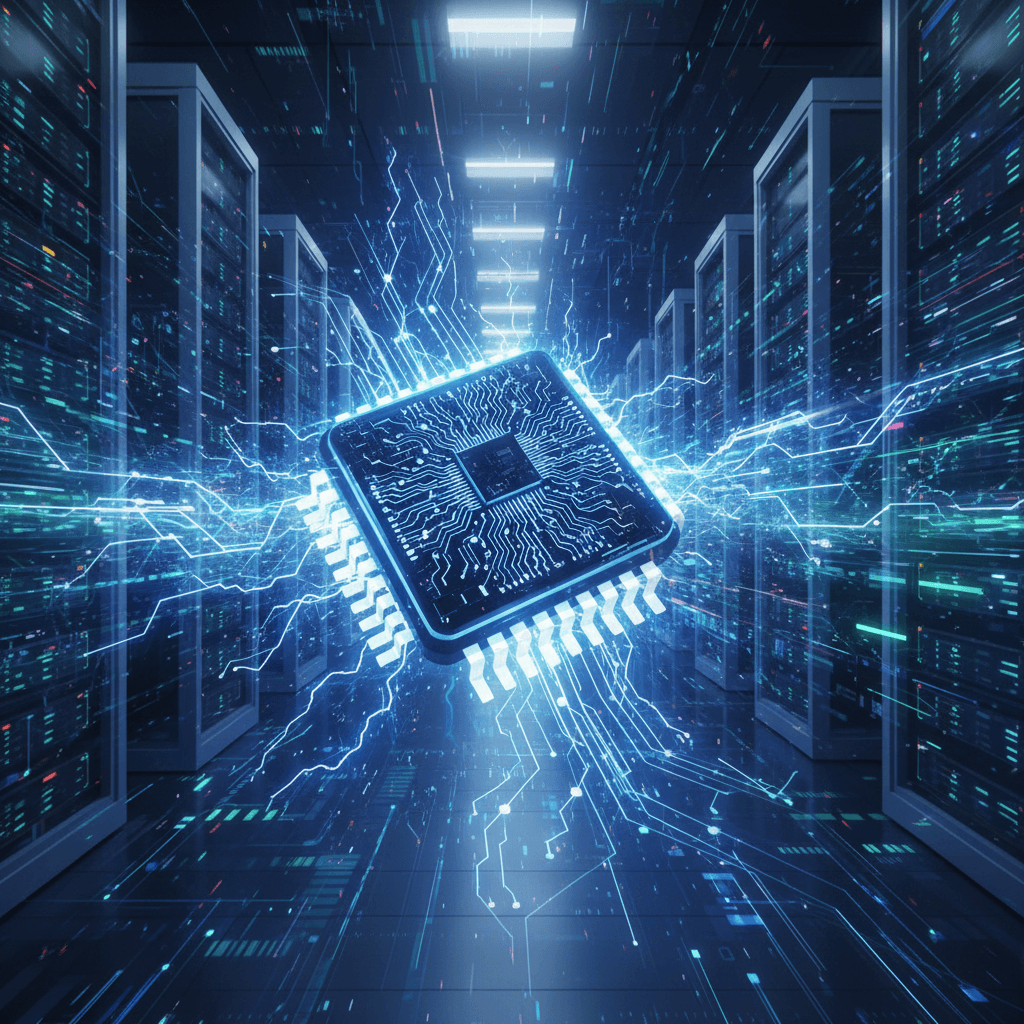Qualcomm storms AI data center with new chips, challenging Nvidia.
From mobile dominance to AI data centers: Qualcomm unleashes power-efficient chips to challenge Nvidia and lower inference costs.
October 27, 2025

In a strategic move poised to reshape the competitive landscape of artificial intelligence hardware, Qualcomm has officially announced its entry into the high-stakes data center market. The company, long dominant in the mobile chip sector, is directly challenging established players with the introduction of two new AI accelerator chips, the Qualcomm AI200 and AI250. This expansion marks a significant pivot for the San Diego-based firm, leveraging its deep expertise in power-efficient computing to target the rapidly growing demand for generative AI infrastructure. The move signals a new chapter for Qualcomm and introduces a potent new competitor into a market that has been overwhelmingly controlled by a handful of companies, promising to intensify innovation and provide enterprises with much-needed alternatives for their AI workloads.
The new product family is engineered specifically for AI inference—the process of running trained AI models to generate predictions and content—which is expected to constitute the majority of AI-related computations in the coming years.[1] The first of the new accelerators, the AI200, is slated for commercial availability in 2026.[2][3][4] It is designed to deliver a low total cost of ownership (TCO) for running large language models (LLMs) and multimodal models.[3][5] A key feature of the AI200 is its substantial memory capacity, supporting an impressive 768 GB of LPDDR memory per card, a design choice aimed at keeping entire AI models in memory to reduce data shuffling bottlenecks and increase speed.[6][2][7][1] Following this release, Qualcomm plans to launch the more advanced AI250 in 2027.[2][3][4] The AI250 will feature an innovative near-memory computing architecture, a design that places processing power physically closer to memory chips.[1] Qualcomm claims this will provide a generational leap in performance, delivering more than ten times the effective memory bandwidth while significantly lowering power consumption.[6][2][1] Both solutions will be available as chip-based accelerator cards or as fully integrated, direct liquid-cooled server racks designed for rack-scale performance.[2][3][1]
This foray into the data center is a calculated diversification for Qualcomm, aimed at reducing its long-standing dependence on a maturing smartphone market.[8][9][4] The strategy is not to start from scratch but to adapt its core competencies for a new arena. The new AI accelerators are built upon the company's extensive leadership in Neural Processing Unit (NPU) technology, which was originally developed and refined for the power-constrained environment of mobile phones.[3][8][9] By repurposing this expertise in efficient, powerful chip design for the data center, Qualcomm is betting that its focus on performance-per-watt and cost-effectiveness can carve out a significant market share.[7][4] This marks the company's second major attempt to penetrate the data center computing space, but this time with a clear focus on the booming AI inference segment.[10] To underscore its commitment, Qualcomm has pledged to maintain an annual cadence for new data center product releases, signaling a long-term strategic vision rather than a one-off product launch.[3][11]
The announcement has sent ripples through the industry, positioning Qualcomm as a direct challenger to Nvidia, which currently commands an estimated 80% of the AI chip market, as well as other competitors like AMD and Intel.[10] The market's reaction was immediate and overwhelmingly positive, with Qualcomm's stock price surging by nearly 20% following the news, reflecting strong investor confidence in the company's AI ambitions.[12][10][4] A critical factor in gaining market credibility is early customer adoption, and Qualcomm has already secured a significant win. Saudi Arabia's AI startup, Humain, has been announced as the first major customer and plans to deploy 200 megawatts of the new AI racks starting in 2026.[8][10][9][4] Beyond the hardware, Qualcomm understands that a robust software ecosystem is crucial for adoption. The company is promoting a comprehensive software stack designed to be compatible with major AI frameworks and tools.[2][3] This includes features like one-click deployment for models from the popular Hugging Face library, intended to make it easier for developers and enterprises to integrate and scale their AI models on the new infrastructure.[2][3][1]
In conclusion, Qualcomm's deliberate and powerful entry into the AI data center market represents a pivotal moment for the semiconductor industry. By leveraging its mobile NPU heritage to create specialized, power-efficient accelerators for AI inference, the company is not just diversifying its business but is also presenting a compelling alternative in a market ripe for more competition. The AI200 and AI250, with their focus on memory capacity and low total cost of ownership, address key pain points for enterprises deploying large-scale generative AI. While the path to challenging the market's entrenched leaders is formidable, Qualcomm's strategic focus, early customer traction, and strong technology foundation signal that a new, serious contender has entered the ring, potentially heralding an era of increased innovation, more competitive pricing, and greater choice for the builders of our AI-powered future.
Sources
[1]
[2]
[4]
[6]
[7]
[8]
[9]
[10]
[11]